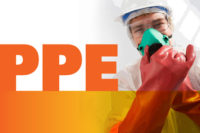Regulating body temperature in extreme temperatures can be challenging even under normal circumstances. However, situations requiring flame-resistant (FR) garments can create additional obstacles due to the natural insulation properties of FR clothing. When selecting FR garments for hot environments, it is imperative to take steps to ensure workers remain as safe and comfortable as possible on the job.
A common hazard amongst workers exposed to extreme heat is heat stress. Heat stress can be extremely dangerous and result in heat stroke, heat exhaustion, heat cramps or heat rashes.1 In fact, the U.S. Bureau of Labor Statistics (BLS) reports that ‘Exposure to Environmental Heat’ caused 177 deaths and 13,580 cases of days away from work in the private sector workforce2 from 2003-2008.
While heat stress can be attributed to external factors like temperature, other factors such as workplace uniforms can contribute to the impact of these sources of heat. A worker may not consciously realize the effect of his or her garments on core body temperature. However, just as choosing the right clothing makes a difference when exercising, it is also a key factor in regulating temperature while working in a physical role. This is why it is essential to consider how the company uniform can affect a worker’s thermal comfort when evaluating and specifying flame-resistant (FR) garments.
Total Heat Loss: An important measurement for FR garments
Total heat loss (THL) is a method used to measure the maximum workload or metabolic activity rate a person can sustain while maintaining thermal comfort in a garment (personal protective equipment). This measure is part of the certification for garments in the fire-fighting industry. THL measures the amount of conductive (dry) and evaporative (wet) heat loss that occurs through the fabric of a PPE garment.3 By placing fabric samples on specially designed plates that simulate hot, sweaty skin under controlled lab conditions, the ability of the fabric to transfer heat can be precisely measured. In hot conditions, a fabric that holds less heat is more desirable to help the core remain cool.
In hot environments, choosing garments with high THL performance is not only important for employees, but for management as well. Employees in roles with physical activity may face discomfort, physiological strain, decreased productivity and performance, and potentially increased accident rates on the job. 4 A uniform with better performance can have some level of impact on these challenges.
THL considerations in FR clothing
When specifying protective clothing, incorporating THL performance should be taken into consideration. The THL measurement combines the performance of several fabric properties, including air permeability and moisture wicking.
Certain PPE garments have a low air permeability rate, which limits evaporation and normal heat dissipation through airflow. This in turn increases body temperature and sweating. 5 Air permeability is a key contributing factor to good THL performance.
An FR garment must not only offer breathability, but moisture wicking as well. Cotton shirts are soft and comfortable in moderate temperatures, but when exposed to increased levels of sweat, they become saturated. Retaining moisture reduces a fabric’s THL rating as it decreases the evaporative cooling capability. The same cotton that feels comfortable around the house becomes a liability in an extremely hot work environment.
In warm environments, it is essential workers remain cool because the natural reaction to facing a hot environment in heavy clothing is to make modifications to the prescribed equipment, which affects its intended purpose. Rolling up the sleeves or leaving a coverall unzipped are common modifications that undo FR safety protocols, and in some cases may add the risk of entanglements.
The bottom line on FR garments
FR garments should be assessed not only for their comfort, but for how well they can contribute to the safety and productivity of the workers who wear them. By selecting FR garments with THL measures in mind, safety managers can take steps to ensure employees will be able to maintain a safe and comfortable temperature in the workplace. Finally, in addition to specifying optimal garments for hot environments, safety managers should take the initiative to educate employees on selecting the right under-garments, should they provide their own.
Footnotes
1 Centers for Disease Control & Prevention
2 Bureau of Labor Statistics
3 Fire Engineering
4 Extreme Physiology & Medicine
5 Extreme Physiology & Medicine


